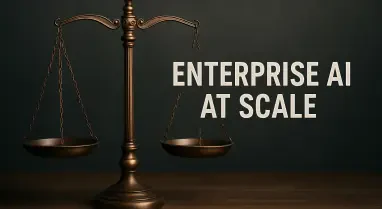In an era where technology evolves at a breakneck pace, Chief Information Officers (CIOs) are under immense pressure to not only keep up but to lead their organizations into the future, and TechCrunch Disrupt, held from October 27-29 at the Moscone Center in San Francisco, emerges as a critical arena for this mission. This annual event, long recognized as a breeding ground for startup innovation and investor connections, has increasingly become a vital platform for IT leaders seeking to navigate the complex landscape of digital transformation. By fostering direct engagement with pioneering startup founders and seasoned industry experts, the conference offers CIOs a rare chance to explore cutting-edge solutions to their most daunting challenges. Key focus areas such as artificial intelligence (AI), particularly agentic AI, the intricacies of scaling technology solutions, and even the nuanced art of personal branding for executives, are set to dominate discussions. This gathering isn’t just about observing trends; it’s about equipping CIOs with actionable strategies to stay ahead in a fiercely competitive environment.
Agentic AI: Transforming Enterprise Workflows
The rise of agentic AI stands out as a transformative force at TechCrunch Disrupt, often described as an “invisible revolution” due to its profound potential to reshape how enterprises operate across various sectors. Sessions such as “The Invisible AI Revolution,” led by founders from Super.AI, delve deeply into how this technology can drive profitability—a metric of utmost importance for CIOs who must continually justify technology investments to stakeholders. The promise of agentic AI lies in its ability to automate complex workflows, making operations more efficient while reducing human error. However, the challenge for IT leaders is not merely adopting this technology but ensuring it integrates seamlessly with existing systems. This requires a deep understanding of both the technical capabilities of AI and the specific needs of their organizations, a balance that is far from straightforward in today’s diverse business environments.
Beyond integration, another critical aspect of agentic AI that CIOs must grapple with is the robustness of the underlying data infrastructure, a topic highlighted in the session “From Web Pages to Autonomous Agents” by Bright Data CEO Or Lenchner. This discussion emphasizes that for AI agents to function effectively, they need access to live, structured web data, which demands a solid foundation of data management practices. The hurdle here is building and maintaining such infrastructure without compromising security or scalability, especially in an era where data breaches are a constant threat. For CIOs, the pressure is on to not only champion the adoption of agentic AI but also to prove its tangible business value through measurable outcomes, ensuring that the technology doesn’t just dazzle with potential but delivers real, sustainable impact to the bottom line.
Mastering the Art of AI Model Training
Training AI models represents a cornerstone challenge for CIOs, and TechCrunch Disrupt addresses this with insightful sessions like “The Post-Training Revolution” by CoreWeave, which explores the evolving landscape of reinforcement learning. This session sheds light on how post-training techniques are reshaping the AI infrastructure stack, offering ways to enhance model performance beyond initial development phases. The complexity of these methods, however, poses a significant obstacle for IT leaders who must ensure that their teams are equipped with the right skills and tools to implement them effectively. Additionally, the rapid pace of innovation in this field means that staying current is a constant battle, requiring CIOs to allocate resources for continuous learning and adaptation while managing day-to-day operational demands.
Another vital discussion, “How to Train Your Model” by Anthropic, focuses on safety tuning and innovative approaches like red-teaming and constitutional AI to create reliable and harmless models. This session underscores the delicate balance CIOs must strike between pushing the boundaries of AI innovation and maintaining dependability, as a single misstep in model behavior could lead to significant operational disruptions or reputational damage. The challenge extends to deciding between general-purpose and specialized models, each with its own set of trade-offs in terms of cost, performance, and applicability. For IT leaders, mastering AI model training isn’t just a technical endeavor; it’s a strategic imperative that demands careful consideration of long-term business goals alongside immediate technological needs, ensuring that AI initiatives align with broader organizational objectives.
Scaling Technology Solutions Strategically
Scaling technology solutions remains a perennial issue for organizations of all sizes, and TechCrunch Disrupt offers a wealth of practical guidance through sessions like Fireworks AI’s “Prototyping, Tuning, and Scaling Gen AI Applications with Open Models.” This talk provides a roadmap for selecting the right models, running effective evaluations, and scaling applications without sacrificing latency or exceeding budgets—a trio of concerns that often keep CIOs up at night. The complexity of scaling lies not just in the technical execution but in anticipating future growth and user demands, which can shift unexpectedly in today’s dynamic market. IT leaders must navigate these waters with precision, ensuring that scalability efforts enhance rather than hinder overall performance, a task that requires both foresight and flexibility in equal measure.
Further insights on scaling come from diverse perspectives, such as Reddit’s session on balancing safety and mitigating bias in search and machine learning systems, alongside Phoebe Gates’ discussion on scaling consumer AI with her brand Phia in “Storming the Gates.” These sessions collectively highlight that scaling is as much a strategic concern as it is a technical one, demanding alignment between technological capabilities, user expectations, and financial constraints. For CIOs, the challenge is to craft scaling strategies that are proactive rather than reactive, addressing potential bottlenecks before they become crises. This involves not only leveraging the latest tools and methodologies but also fostering a culture of adaptability within their teams, ensuring that the organization can pivot swiftly in response to new challenges or opportunities that arise in the ever-evolving tech landscape.
Personal Branding: Redefining Executive Influence
An emerging yet critical topic at TechCrunch Disrupt is personal branding for executives, explored in the session “Tim Cook Has More Followers Than Apple,” led by executives from EllieMD and UP10 Media. This discussion posits that CIOs can significantly enhance the visibility and impact of IT initiatives through authentic, executive-led storytelling, a departure from traditional, impersonal corporate communications. In an age dominated by social media and personal connection, the ability to humanize complex technological messages can build trust and engagement among employees, stakeholders, and the wider industry. However, the challenge for IT leaders lies in stepping out of their technical comfort zones to embrace a more public-facing role, a shift that requires both vulnerability and strategic communication skills often outside their typical purview.
Moreover, personal branding for CIOs isn’t just about gaining followers or likes; it’s about shaping perceptions of IT as a driver of business value, a theme that resonates throughout the conference. By crafting a narrative that connects technological advancements with organizational goals, IT leaders can bridge the gap between technical teams and business units, fostering greater alignment and collaboration. The obstacle here is finding the right balance between authenticity and professionalism, ensuring that personal branding efforts don’t come across as self-serving but rather as a genuine extension of their leadership vision. For CIOs, mastering this new frontier means rethinking their role not just as technology stewards but as influential voices capable of inspiring change and driving strategic outcomes across their enterprises.
Navigating the Future of IT Leadership
Reflecting on the insights shared at TechCrunch Disrupt, it becomes evident that the event serves as a pivotal platform for CIOs to confront and address some of the most pressing challenges in enterprise technology. The deep dives into agentic AI, AI model training, strategic scaling, and the innovative angle of personal branding provide a comprehensive toolkit for IT leaders to refine their approaches. These discussions illuminate the path forward, emphasizing the need for a balanced focus on technical innovation and business alignment. As the conference concluded, the actionable takeaways offered CIOs a clear directive: to embrace these challenges as opportunities for transformation. Moving ahead, IT leaders should prioritize building robust frameworks for AI integration, invest in continuous learning for scaling solutions, and explore personal branding as a means to amplify their impact. These steps, rooted in the rich dialogue from the event, promise to position organizations at the forefront of a tech-driven future.






